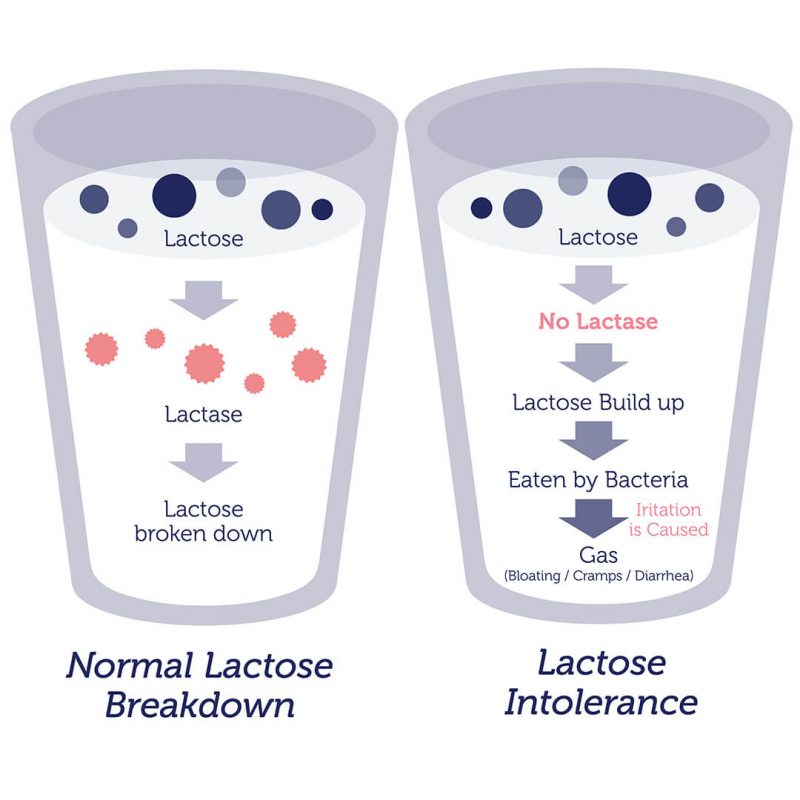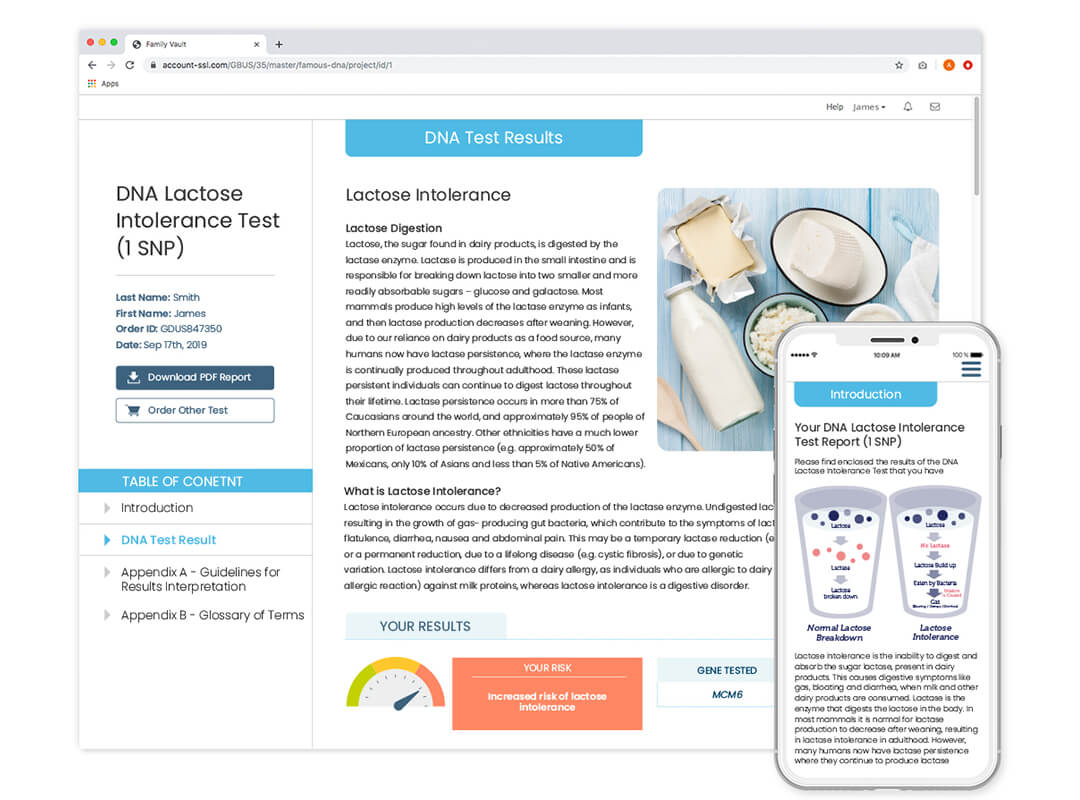Lactose Intolerance DNA Test (1 SNP)
Could your digestive issues be due to lactose intolerance? Find out if are lactose intolerant with this DNA test.
- Includes ONE genetic variant of the MCM6 gene
- The most common variant associated with lactase persistence and lactose intolerance in European populations
- 100% private and confidential online results
Already have DNA markers? Sign in and upload your data to view results.
Need to take the DNA Test? Order our easy-to-use swab kit.
 Detailed Description
Detailed Description
Lactose Intolerance vs Lactase Persistence
Lactose intolerant individuals cannot digest and absorb the milk sugar lactose, because they produce only low levels of the lactase enzyme (or none at all). This results in digestive symptoms including gas, bloating, and diarrhea, when dairy products are consumed.
Lactase persistence is the opposite of lactose intolerance. Lactase persistent individuals are able to produce the lactase enzyme for their entire lives, meaning they can continue to consume dairy products right through adulthood.
This DNA test examines one genetic variant of the MCM6 gene associated with lactose intolerance. For a more comprehensive test that examines all five MCM6 variants, please order the DNA Lactose Intolerance test.

 The Genetics
The Genetics
Genetic variation is the strongest predictor of lactose intolerance and lactase persistence. This DNA test determines whether you have inherited the rs4988235 variant of the MCM6 gene that enables lactase persistence.
The rs4988235 variant is inherited in an autosomal dominant manner, which means only one copy of is required to enable lactase persistence.
If an individual inherits two copies of the wild type MCM6 gene, they will be lactose intolerant in adulthood. If an individual inherits two copies of a variant MCM6 gene, they will have lactase persistence. Individuals with one copy of a wild type MCM6 gene and one copy of a variant usually have lactase persistence (although there may be some lactose sensitivity).
Additional MCM6 variants have been linked to lactase resistance. Therefore a more comprehensive DNA test may be required to exclude lactose intolerance as a cause of your digestive issues.

The MCM6 gene encodes a protein that controls the production of other proteins. This includes lactase, encoded by the nearby LCT gene. People with one or two copies of the MCM6 variant tested here are unlikely to suffer from lactose intolerance and will be able to digest lactose well into adulthood.
The likelihood of lactose intolerance depends on ethnicity. Lactose intolerance is the wild type (or historical) phenotype. The variants associated with lactase persistence occurred, and were selected for, when there was an increased reliance on dairy as a food source.
Many ethnicities are still mostly lactose intolerant, including 90% of Asians, 70% of African-Americans, and 95-100% of Native Americans.
In contrast, less than 25% of Caucasians and only about 5% of people of Northern European ancestry are lactose intolerant, because dairy has been a food staple for long periods in their history.
Lactose intolerance causes undigested lactose to build up in the large intestine, resulting in the growth of gas-producing gut bacteria. Symptoms include:
- Bloating
- Flatulence
- Diarrhea
- Nausea
- Vomiting
- Abdominal pain or cramps
- Gurgling and rumbling sounds from the abdomen
 How It Works
How It Works
Step 1: Sign up for a free DNA Access account.
Step 2: Upload your DNA markers to DNA Access.
Step 3: Log in to your account to access your results when they are ready.
| product_summary | Determine if you are at risk of lactose intolerance. |
|---|



